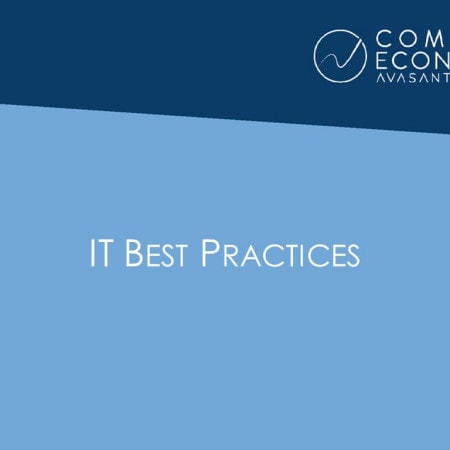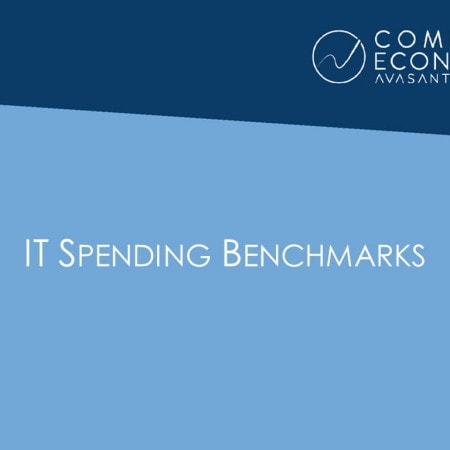-

E-Government Trends and Maturity Status
For the average citizen or business, interfacing with the local, state, or federal government can often be a frustrating and time-consuming venture. Will the Internet simplify our interactions with the government? What is the status of e-business in the government sector, also called e-government? When will we be able to use the Internet for many of these functions? How serious is the government about e-business and how fast are they moving? What are the hurdles with implementing e-government?
October, 2003
-

Reorient Your Strategies to Capture E-Business Potential (2Q03)
During the dot-com explosion over $20 billion of venture capital was poured into e-business vendors, and companies spent an additional $50 billion of their own capital on the web. Less than 25% of this spending produced positive returns on investment. Now, however, is not the time to back away from e-business but rather to learn from the past and steer efforts toward what works well.
June, 2003
-

E-Business: Fad or True Transformation? (2Q03)
Exactly where is e-business today? Is it just hype, or is it beginning to add true value to the organization? Are companies moving forward? Are they seeing a competitive advantage with e-business?
April, 2003
-

IBM’s E-Business On-Demand Strategy (1Q03)
Providing e-business via an on-demand model may become a key differentiator that separates market leaders from the pack.
January, 2003
-

Early XML Trials Show Good Returns (1Q03)
Enterprises are beginning to apply XML as a common framework for developing more flexible content presentations. XMLâs power, flexibility, and solid payback means universal acceptance is almost a certainty. We strongly recommend that all IT managers become knowledgeable about XML applications that will address the needs of their organizations
January, 2003
-

Worldwide E-Business Technology Spending Projections 2003 to 2005 (December 2002)
Worldwide e-business spending will reach $80.5 billion in 2003. The United States will account for $33.5 billion of the worldwide total.
December, 2002
-

B2B Online Usage by Manufacturing Companies (November 2002)
Only 10 percent of the manufacturing plants surveyed were making online payments to vendors in 2000. However about 30 percent plan to be conducting business in this manner by year-end 2002.
November, 2002
-

IT Spending and Management Patterns in Organizations With E-Commerce in Place (Oct 2002)
Businesses seeking to gain more control of their purchasing transactions are investigating B2B networks in the form of private exchanges.
October, 2002
-

E-Business at the Crossroads
Despite enormous potential, e-business and e-commerce companies have often been disappointed by the results obtained from their investments. The spectacular shakeout of the dot coms last year has emphasized this point. Even in light of these events, now is not the time to give up on e-business efforts. Nevertheless, E-business can only work if the organization is ready to embrace changes in its business methods.
October, 2002
-

The E-Business Overview: IT Architecture
As e-business applications grow from departmental and divisional applications into critical enterprise systems, corporations are re-visiting their web architectures and fine-tuning their engines for optimal business performance. This analysis explores how e-business architecture can be built and optimized. We also take a look at recent architectural demands of flexibility and adherence to standards.
August, 2002
-

Why Web Businesses Fail—and Ten Ways to Avoid Failure (August 2002)
While "e-business" and the dot com era will not be looked back on as a passing summer fad, itâs no secret that there have been numerous failures for every success. A number of these failures can be attributed to the false exuberance and the updraft of anticipation of the dot com era. In hindsight, many observe that the early dot coms overestimated the speed with which the marketplace would adopt the Internet as a channel for products, services, and content.
August, 2002
-

EDI Practices in 2002 (May 2002)
Many people speculated that the Internet and the World Wide Web would be the death of EDI. Wrong! EDI is alive and well according to the 13th annual Information Systems and E-Business Spending study conducted by Computer Economics. EDI via direct dial connections with suppliers remains one of the most popular methods for organizations to exchange large amounts of data.
May, 2002
-

E-Business Practices in 2002 (May 2002)
E-business practices are becoming rather widely adopted in most industry sectors according to the 13th annual Information Systems and E-Business Spending study conducted by Computer Economics. Virtually all of the organizations that participated in the 2002 study have web sites and large percentages of companies in every sector are using B2B or B2C applications.
May, 2002

 List View
List View